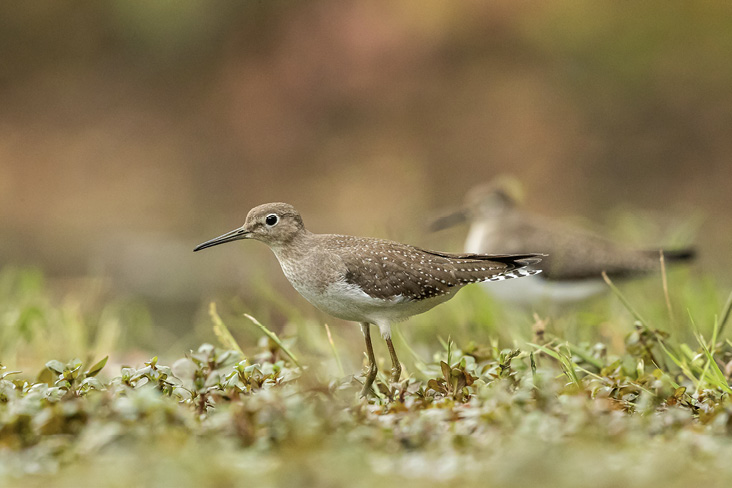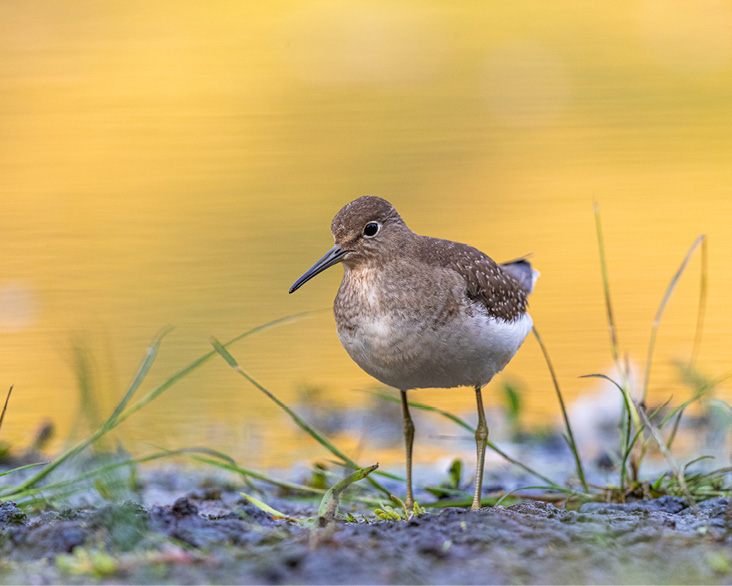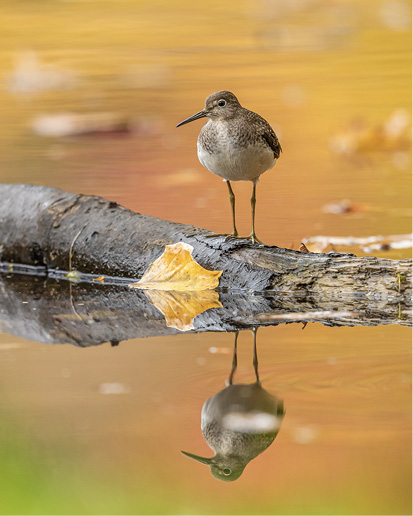Michael Rossacci

Solitary Sandpipers at Mill Pond in Belmont, Massachusetts, during September 2020. Photographs by the author.
If rain is scarce during the dog days of late summer, then bird photographers and birdwatchers may have great viewing opportunities for inland shorebirds on exposed mudflats. Over a three–week stretch in September and October of 2020, I spotted and photographed Solitary Sandpipers at Mill Pond in Belmont, Massachusetts, which is part of the Beaver Brook Reservation. During this period, I came to appreciate that this pond was a precious stopover for these shorebirds, helping them continue along their southward journey.
During my first encounter, I almost missed seeing the sandpipers, both because they were dwarfed in size and number by a local raft of mallards and because they blended in well with the mud and vegetation at the water’s edge. Once I got accustomed to the sandpipers’ size and color pattern, I was able to spot them more easily during each visit. Most of the time I found at least one sandpiper, but on occasion a second bird, possibly an immature, would fly in and join in the foraging.
In late summer the shallow water level together with the exposed shoreline provided excellent foraging opportunities for these sandpipers and for other birds migrating through the area. Given their dedicated probing movements, it is highly likely that insects and other edibles were easily accessible and in abundance. The sandpipers tended to be not too far from the dabbling ducks, possibly taking a cue from where they were feeding.

Solitary Sandpiper. Exposed mud provides nutrients that are important for successful fall migration.
It was easy to walk a short distance out into the exposed mud area to obtain a good position to set up for photography. I had a long telephoto lens on my camera and I used a plastic tarp to keep myself and my gear dry. Because the birds were focused on feeding, they did not pay much attention to me, although it was important to keep enough distance so as not to alter their behavior. At one point, a Solitary did march right up close to me within about twenty feet before returning to feeding. On one visit in early October, which happened to coincide with peak foliage, I was able to capture vibrant colors reflecting in the water near the sandpipers.
When mid-October rolled around, I visited the pond after a heavy rain and found the exposed mud was totally submerged and no sandpipers were in sight. With the water level back up, the birds would not have been able to feed and they had moved on to the next segment of their fall migration. Getting a prolonged period to observe and photograph Solitary Sandpipers was a rewarding experience for me and I look forward to the spring when they are back in the area again. You can see my shorebird collection on my website michaelrossacciphotography.com.
